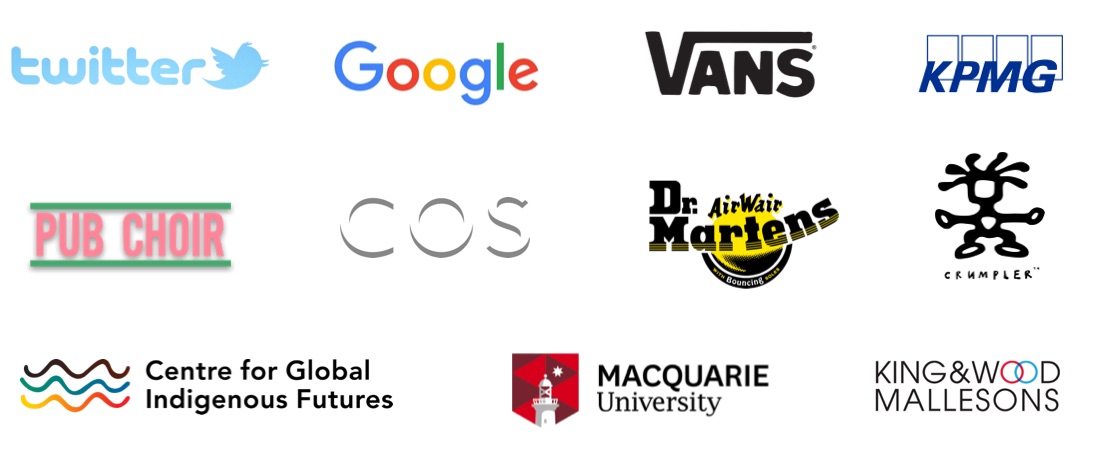
Why this report is needed
The ongoing and evolving partnership between Black Rainbow and KPMG was brought about through a shared commitment to making a difference in the lives of First Nations LGBTIQA+SB people through systemic change leading to real, tangible outcomes.
Through our collaborative approach to this report and the work that has come before it, we have collectively learned from the community members who have shared their stories and perspectives with us. We recognise these people as change leaders, and their communities as having the power and commitment to enact the change which we hope to create through this report.
KEY ACTIONS
First Nations LGBTIQA+SB people have clear aspirations for the future of their community, where not enough is being done currently at policy and service levels.
First Nations LGBTIQA+SB people have clear aspirations for the future of their community, where not enough is being done currently at policy and service levels.
GOVERNANCE
Governance | A self-determination approach is crucial to empower community to drive the policy, services and funding decisions that impact First Nations LGBTIQA+SB people. This must be led by people who possess both subject matter expertise and lived experience.

Develop a National Framework for First Nations LGBTIQA+SB community priorities and actions, as a continuation of existing advocacy work
Key action:
SERVICE DELIVERY
Health services should make a commitment to act as change leaders, increase representation of First Nations LGBTIQA+SB people among board and staff and engage in learning as a dialogue on an ongoing basis.

Strengthen capability and accountability through community-led education
Key action:
RESEARCH
Research, data collection, and monitoring must consider and reflect the experiences and needs of the First Nations LGBTIQA+SB community as a distinct and unique cohort, as a clear basis for evidence-informed practice.

Strengthen capability and accountability through community-led education
Key action:
WHO IS THIS REPORT FOR?
This report contains an Action Plan, aimed at Government, the service industry, and the First Nations’ health sector, that will drive urgently needed change to improve the health and
wellbeing of First Nations LGBTIQA+SB people. Action at all levels is needed to improve governance, service delivery, evaluation, and monitoring for First Nations LGBTIQA+SB people.
ACTION
We have developed three action areas based on what we heard from the people we spoke with and the broader body of evidence. These describe what government, the service sector, and community can do right now to make health policy, health services, and research and monitoring more responsive to the needs of the community.
What needs to happen next
Governance, service delivery, and research are the three areas with the greatest opportunity to drive change and impact the lives of First Nations
LGBTIQA+SB people and communities for the better. Starting from the short term, a commitment to action needs to be made into the medium-term (2-4 years) and long-term (5+ years).
At the heart of all actions is self-determination, which embeds community voices at every stage of the decision-making process from community boards, organisational and service leadership, to policy and funding. Continuing and building upon the strong tradition of community-led advocacy, research, and support systems is the key to ensuring services and communities are safer and affirming of LGBTIQA+SB people in all aspects of their identity.
Action Area 1: Governance
A self-determination approach embeds First Nations LGBTIQA+SB community members at all levels of decision-making, and empowers the community to share their expertise to make a material impact on health policy and funding decisions.
SHORT TERM
Government: Support Black Rainbow to lead the development a national Indigenous LGBTIQA+SB culturally responsive Framework, as a community-led document with input from diverse members of the community: The Framework will be aimed at government and health services, and will identify community priorities and the way forward.
Community: Host a National Gathering of First Nations LGBTIQA+SB people, fostering a shared discussion and identifying key community priorities for the development of a First Nations LGBTIQA+SB Health Framework:
Identify community change champions, goals for advocacy, and ways to support them.
MEDIUM TERM
Government: Through policy, strategies, and budget decisions, allocate funding to improve service delivery and health outcomes for First Nations LGBTIQA+SB community, which acknowledges the distinctness and diversity of this community, their experiences and needs.
Community: Engage with Elders, First Nations LGBTIQA+SB subject matter experts and Boards at the community level to establish support for LGBTIQA+SB community members, and foster understanding through a two-way dialogue that enables Elders and Boards to be supported as change allies
LONG TERM
Government: Through policy, strategies, and budget decisions, allocate funding to improve service delivery and health outcomes for First Nations LGBTIQA+SB community, which acknowledges the distinctness and diversity of this community, their experiences and needs.
Community: Engage with Elders, First Nations LGBTIQA+SB subject matter experts and Boards at the community level to establish support for LGBTIQA+SB community members, and foster understanding through a two-way dialogue that enables Elders and Boards to be supported as change allies
Action Area 2: SERVICE DELIVERY
An ongoing commitment to learning and development, coupled with increased representation of community members in peer work and decision-making roles, will enable health services embedded in community to act as change leaders.
SHORT TERM
• Government: Fund the development of a sustained learning and development pathway in First Nations LGBTIQA+SB health, developed through a self-determination community-led approach, and aimed at Aboriginal health services, LGBTIQ+ health services, and mainstream health services:
• Development of the learning and development pathway is to be led by community subject matter experts in consultation with health services.
• The learning and development pathway will commit health services to learning and development as an ongoing dialogue with First Nations LGBTIQA+SB change leaders and their community.
• As a priority it will include learning material around culturally safe gender-affirming care, mental health, and care needs of older LGBTIQA+SB people.
• All health services: Assess level of engagement with the First Nations LGBTIQA+SB community and make commitment to an ongoing process of improving organisational cultural competency and diversity literacy, beyond one-off actions or accreditations.
• Aboriginal health services: ensure informational materials relevant to LGBTIQA+SB health (such as PrEP, trans* specific health, sexual health, and mental health) are available and displayed prominently.
MEDIUM TERM
• Government: Roll out learning and development pathways across health services, with a priority towards LGBTIQ+ health services and Aboriginal health services in rural and remote communities.
• Aboriginal health services: identify opportunities to foster engagement and two-way dialogue between Elders, Boards, and First Nations LGBTIQA+SB community, and to position the service to work with community leaders as change leaders:
• Through this dialogue, identify change champions within health service staff who can drive increased understanding and acceptance of LGBTIQA+SB community members among the broader community.
• Identify ways to increase formal and informal culturally safe support for older LGBTIQA+SB people at the community level.
LONG TERM
• Government: Fund the development of training for a cultural liaison/peer workforce in the health system for First Nations LGBTIQA+SB people:
• Provide genuine career pathways into peer work roles for people based on lived experience, including for people without formal qualifications.
• Focus on the sustainability of these roles by supporting peer workers through mentorship and on-the-job development opportunities, to foster subject matter expertise.
• All health services: Identify opportunities to embed First Nations LGBTIQA+SB people into organisational leadership, advisory, and other peer work roles, to drive ongoing cultural competency and service improvement.
Action Area 3: RESEARCH
Evidence and data gaps must be addressed through an increased commitment and funding for community-led data collection, evaluation and monitoring, and research that take an intersectional lens to First Nations LGBTIQA+SB people as a distinct community with specific health needs and experiences.
SHORT TERM
• Government: Fund the development of a sustained learning and development pathway in First Nations LGBTIQA+SB health, developed through a self-determination community-led approach, and aimed at Aboriginal health services, LGBTIQ+ health services, and mainstream health services:
• Development of the learning and development pathway is to be led by community subject matter experts in consultation with health services.
• The learning and development pathway will commit health services to learning and development as an ongoing dialogue with First Nations LGBTIQA+SB change leaders and their community.
• As a priority it will include learning material around culturally safe gender-affirming care, mental health, and care needs of older LGBTIQA+SB people.
• All health services: Assess level of engagement with the First Nations LGBTIQA+SB community and make commitment to an ongoing process of improving organisational cultural competency and diversity literacy, beyond one-off actions or accreditations.
• Aboriginal health services: ensure informational materials relevant to LGBTIQA+SB health (such as PrEP, trans* specific health, sexual health, and mental health) are available and displayed prominently.
MEDIUM TERM
• Government: Roll out learning and development pathways across health services, with a priority towards LGBTIQ+ health services and Aboriginal health services in rural and remote communities.
• Aboriginal health services: identify opportunities to foster engagement and two-way dialogue between Elders, Boards, and First Nations LGBTIQA+SB community, and to position the service to work with community leaders as change leaders:
• Through this dialogue, identify change champions within health service staff who can drive increased understanding and acceptance of LGBTIQA+SB community members among the broader community.
• Identify ways to increase formal and informal culturally safe support for older LGBTIQA+SB people at the community level.
LONG TERM
• Government: Fund the development of training for a cultural liaison/peer workforce in the health system for First Nations LGBTIQA+SB people:
• Provide genuine career pathways into peer work roles for people based on lived experience, including for people without formal qualifications.
• Focus on the sustainability of these roles by supporting peer workers through mentorship and on-the-job development opportunities, to foster subject matter expertise.
• All health services: Identify opportunities to embed First Nations LGBTIQA+SB people into organisational leadership, advisory, and other peer work roles, to drive ongoing cultural competency and service improvement.




